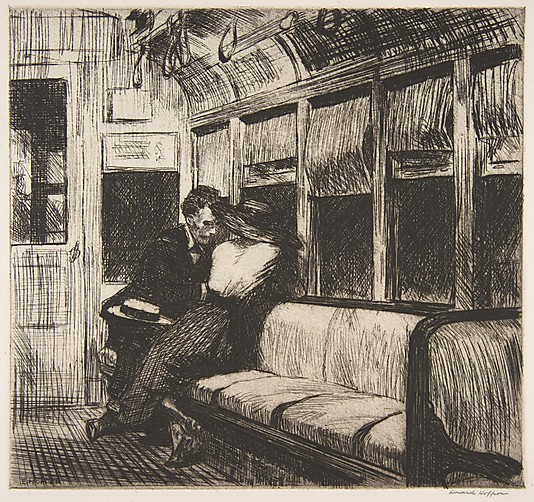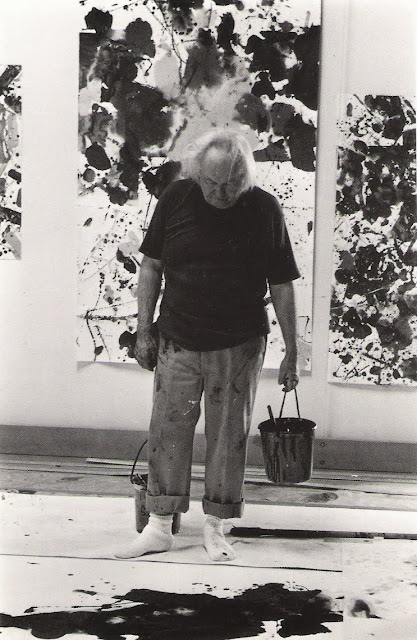
Hilton Kramer, art critic and champion of tradition in the culture wars
Hilton Kramer whose clear, incisive style and combative temperament made him one of the most influential critics of his era, both at The New York Times, where he was the chief art critic for almost a decade, and at The New Criterion, which he edited from its founding in 1982, died early Tuesday in Harpswell, Me. He was 84.
His wife, Esta Kramer, said the cause was heart failure. He had developed a rare blood disease and had moved to an assisted living facility in Harpswell, she said. They lived nearby in southern Maine, in Damariscotta.
Admired for his intellectual range and feared for his imperious judgments, Mr. Kramer emerged as a critic in the early 1950s and joined The Times in 1965, a period when the tenets of high Modernism were being questioned and increasingly attacked. He was a passionate defender of high art against the claims of popular culture and saw himself not simply as a critic offering informed opinion on this or that artist but also as a warrior upholding the values that made civilized life worthwhile.
This stance became more marked as political art and its advocates came to the fore to ignite the culture wars of the early 1980s, a struggle in which Mr. Kramer took a leading role as the editor of The New Criterion, where he was also a frequent contributor.
In its pages, Mr. Kramer took dead aim at a long list of targets: creeping populism at leading art museums; the incursion of politics into artistic production and curatorial decision-making; the fecklessness, as he saw it, of the National Endowment for the Arts; and the decline of intellectual standards in the culture at large.
A resolute high Modernist, he was out of sympathy with many of the aesthetic waves that came after the great achievements of the New York School, notably Pop (“a very great disaster”), Conceptual art (“scrapbook art”) and postmodernism (“modernism with a sneer, a giggle, modernism without any animating faith in the nobility and pertinence of its cultural mandate”).
At the same time, he made it his mission to bring underappreciated artists to public attention and open up the history of 20th-century American art to include figures like David Smith, Milton Avery and Arthur Dove, about whom he wrote with insight and affection. Some of his best criticism was devoted to artists who had up until then been regarded as footnotes.
“Nothing gives me more pleasure,” he wrote in a 1999 catalog essay for the painter Bert Carpenter, “than to discover unfamiliar work of significant quality and intelligence.”
Roger Kimball, editor and publisher of The New Criterion, said of Mr. Kramer: “As a critic of culture, he had a broad range. He wrote on everything from novels and poetry to dance and philosophy, but it was as an art critic that he was best known. His chief virtue was independence. He called it as he saw it — an increasingly rare virtue in today’s culture.”
Hilton Kramer was born on March 25, 1928, in Gloucester, Mass. As a boy he gravitated toward the local artists’ colony and spent long hours in Boston’s art museums. After earning a bachelor’s degree in English at Syracuse University in 1950, he studied literature and philosophy at Columbia, the New School for Social Research and Harvard.
While studying Dante and Shakespeare at the Indiana University School of Letters in the summer of 1952, he struck up an acquaintance with Philip Rahv, the editor of Partisan Review, who encouraged his critical ambitions.
Art, by pure chance, provided his entry point — specifically Harold Rosenberg’s essay on action painting, published in Art News in December 1952.
Mr. Kramer regarded it, he later said, as “intellectually fraudulent.”
“By defining Abstract Expressionist painting as a psychological event, it denied the aesthetic efficacy of painting itself and attempted to remove art from the only sphere in which it can be truly experienced, which is the aesthetic sphere,” Mr. Kramer said in an interview on the occasion of receiving a medal from the National Endowment for the Humanities in 2004. “It reduced the art object itself to the status of a psychological datum."
He wrote a rebuttal to Mr. Rosenberg and submitted it to Partisan Review, which published it in 1953. The magazine’s enormous prestige established him as an important art critic overnight, giving him, as he recalled in a 1996 essay, “a ticket to a career I wasn’t yet certain I wanted.” He was invited to write regular art reviews for Arts Digest, a fortnightly. Clement Greenberg, the most powerful critic of the day, asked him to write on art for Commentary.
In 1955, Arts Digest became a monthly magazine, Arts. Mr. Kramer, who was hired as its managing editor and became its chief editor in 1961, turned it into one of the most highly respected art journals in the United States. He also wrote art criticism for The New Republic and The Nation.
He married the former Esta Teich, a former assistant editor at Arts, in 1964. She is his only immediate survivor.
Mr. Kramer became art-news editor of The New York Times in 1965 and in January 1974 succeeded John Canaday as the newspaper’s chief art critic. He was a prolific, forceful critic at a time when the art world was undergoing sweeping stylistic and institutional changes. Pop Art, Minimalism and the myriad tendencies grouped under the term postmodernism asserted their claims after the heady days of Abstract Expressionism. Museums, eager to capitalize on the public’s growing appetite for modern art and enticed by the box-office success of blockbuster exhibitions, took a more populist approach to the kinds of shows they mounted and the way they presented them.
Mr. Kramer made it his mission to uphold the high standards of Modernism. In often withering prose, he made life miserable for curators and museum directors who, in his opinion, let down the side by exhibiting trendy or fashionably political art.
The Whitney Museum of American Art, in particular, felt the full force of his scorn every time it raised the curtain on a new biennial, whose roster generally favored installation, video and performance art, usually with a political message and an emphasis on gender and ethnic identity.
Mr. Kramer would have none of it. “The Whitney curatorial staff has amply demonstrated its weakness for funky, kinky, kitschy claptrap in recent years,” he wrote in a review of the 1975 Biennial, “and there is the inevitable abundance of this rubbish in the current show.”
Two years later, he threw his hands up in despair. The biennials, he wrote, “seem to be governed by a positive hostility toward — a really visceral distaste for — anything that might conceivably engage the eye in a significant or pleasurable visual experience.”
Mr. Kramer was impassioned in his praise when art met his high expectations. “He was a high Modernist, but he embraced a rather diverse lot that ran the gamut from Richard Pousette-Dart to Pollock to Matisse to the Russian constructivists,” Mr. Kimball said.
He could surprise. Julian Schnabel, precisely the sort of artist one would have expected him to eviscerate, won qualified praise. In reviewing one of Mr. Schnabel’s first shows, in 1981, Mr. Kramer said he could be “a painter of remarkable powers.” He would later greet with enthusiasm, at least initially, the work of the highly eccentric Norwegian figurative painter Odd Nerdrum.
“He really had a good grasp of Modernism — maybe too good a grasp, because he tended to ignore other things,” the critic Donald Kuspit said of Mr. Kramer. “I admired his seriousness, although I think he became more and more frustrated with the scene, the focus on emerging artists at the expense of mature artists.”
In 1982, Mr. Kramer left The Times to edit The New Criterion, a monthly journal of culture and ideas created to take a contrarian view of multiculturalism, ethnic and gender politics, and other currents coming into prominence in the arts, as well as a neoconservative take on cultural politics generally.
He plunged into acrimonious debate on cultural politics, staking out a conservative position in attacks on the artists and programs financed by the National Endowment for the Arts and the National Endowment for the Humanities, and revisiting the political debates of the McCarthy era and the 1960s.
In his mind, the battle lines were clearly drawn “in this age of irony and institutionalized subversion.”
On the one side was postmodernism, “a revolt against the basic traditions of Western civilization.” On the other, Modernism, whose ideals he characterized as “the discipline of truthfulness, the rigor of honesty.”
In the 1990s he wrote Times Watch, a column in The New York Post devoted to criticism of what he regarded as liberal bias in The New York Times. He later broadened his focus and renamed the column Media Watch. At the same time, he wrote a weekly art column for The New York Observer.
Many of his essays on art and politics were republished in four collections, “The Age of the Avant-Garde: An Art Chronicle of 1956-1972” (1973); “The Revenge of the Philistines: Art and Culture, 1972-1984” (1985), “The Twilight of the Intellectuals: Culture and Politics in the Era of the Cold War” (1999); and “The Triumph of Modernism: The Art World, 1985-2005” (2006).
Mr. Kramer remained unfazed by the furor his criticism aroused and professed to be somewhat puzzled at his reputation. “I’m really not very angry at all,” he told New York magazine in 1984. “I am appalled at times; astonished, disappointed, anxious, worried. I think of myself as judicious.”
Subscribe to:
Comments (Atom)







.jpg)



























.+Le+Vase+Bleu..jpg)
.jpg)













